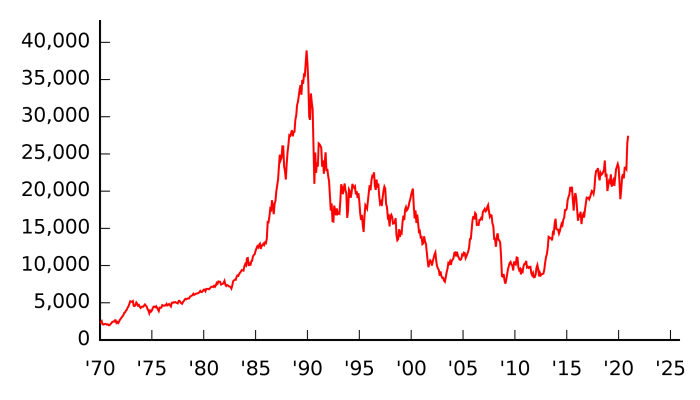Understanding Mutual Funds
When it comes to investing, mutual funds are a popular choice for many individuals looking to grow their wealth. Mutual funds pool money from multiple investors to invest in a diversified portfolio of stocks, bonds, or other securities.
Types of Mutual Funds
There are several types of mutual funds available to investors, each catering to different investment goals and risk tolerance levels:
- Equity Funds: These funds primarily invest in stocks, offering the potential for high returns but also higher risk.
- Debt Funds: These funds invest in fixed-income securities like bonds, providing more stable returns but with lower risk compared to equity funds.
- Index Funds: These funds aim to replicate the performance of a specific market index, such as the S&P 500, offering diversification at a lower cost.
Benefits of Investing in Mutual Funds
Investing in mutual funds offers several advantages over picking individual stocks:
- Diversification: Mutual funds provide exposure to a wide range of securities, reducing the risk associated with investing in a single stock.
- Professional Management: Mutual funds are managed by experienced fund managers who make investment decisions on behalf of investors.
- Liquidity: Mutual funds offer liquidity, allowing investors to buy or sell their shares at the end of each trading day.
Research and Analysis

Before investing in mutual funds, it is essential to conduct thorough research and analysis to make informed decisions about where to put your money. Researching mutual funds involves looking into various factors that can impact their performance and suitability for your investment goals.
Significance of Historical Performance Data
Historical performance data is crucial in evaluating mutual funds as it provides insights into how a fund has performed in the past. By analyzing historical returns over different time periods, investors can gauge the fund’s consistency and volatility. It is important to remember that past performance is not indicative of future results, but it can help investors assess how a fund has weathered different market conditions.
- Examining long-term performance: Look at how the fund has performed over the years, not just in recent months. Consistent long-term performance can indicate a well-managed fund.
- Comparing against benchmarks: Evaluate how the fund has fared against its benchmark index or similar funds in the same category. This comparison can provide a clearer picture of the fund’s relative performance.
- Understanding risk-adjusted returns: Consider the fund’s risk-adjusted returns, such as the Sharpe ratio, which measures the fund’s return relative to its risk. A higher Sharpe ratio indicates better risk-adjusted performance.
Importance of Expense Ratios and Fees
Expense ratios and fees associated with mutual funds can have a significant impact on your overall returns. These costs are deducted from the fund’s assets to cover management fees, administrative expenses, and other operational costs. Understanding and comparing expense ratios can help investors choose cost-effective funds that maximize their returns.
- Comparing expense ratios: Lower expense ratios generally indicate lower costs and can lead to higher net returns for investors. Compare expense ratios across similar funds to identify cost-efficient options.
- Considering other fees: In addition to expense ratios, mutual funds may charge other fees, such as sales loads, redemption fees, or account maintenance fees. Be aware of these additional costs and factor them into your investment decision.
- Impact on returns: High fees can eat into your investment returns over time, so it is essential to choose funds with reasonable costs that align with your investment objectives.
Risk Assessment
When choosing mutual funds, assessing your risk tolerance is crucial to ensure that your investment aligns with your financial goals. Understanding your risk tolerance involves evaluating how much volatility or fluctuation in the value of your investment you can comfortably handle.Diversification plays a key role in reducing risk when investing in mutual funds.
By spreading your investments across different asset classes, sectors, and geographic regions, you can minimize the impact of a potential decline in any single investment.
Types of Mutual Fund Risk Profiles
- Equity Funds:These funds invest primarily in stocks, making them more volatile compared to other types of mutual funds. They are suitable for investors with a higher risk tolerance and a long-term investment horizon.
- Bond Funds:Bond funds invest in fixed-income securities, offering lower volatility than equity funds. They are ideal for investors seeking a more stable investment option with lower risk.
- Money Market Funds:These funds invest in short-term, low-risk securities, making them the least volatile among mutual funds. They are suitable for conservative investors looking to preserve capital.
- Hybrid Funds:Also known as balanced funds, these invest in a mix of stocks and bonds to achieve a balance between risk and return. They are suitable for investors looking for a moderate level of risk.
Fund Manager and Track Record
Fund managers play a crucial role in the management of mutual funds. They are responsible for making investment decisions, buying and selling securities, and managing the fund’s portfolio in line with the fund’s objectives and strategy.
Evaluating Fund Manager’s Track Record
When evaluating a fund manager’s track record, investors should consider factors such as:
- Historical Performance: Analyze the fund manager’s past performance in comparison to relevant benchmarks and peer group funds.
- Consistency: Look for consistency in returns over different market cycles to assess the fund manager’s ability to navigate various market conditions.
- Investment Style: Understand the fund manager’s investment approach and ensure it aligns with your investment goals and risk tolerance.
- Qualifications and Experience: Consider the fund manager’s qualifications, experience, and tenure managing the fund.
Impact of Fund Manager’s Experience
A fund manager’s experience can significantly impact the performance of a mutual fund. Experienced fund managers often have a better understanding of market dynamics, risk management, and investment opportunities. They can make informed decisions and adapt to changing market conditions more effectively, potentially leading to better long-term performance for the fund.
Fund Objectives and Investment Goals
When investing in mutual funds, it is crucial to understand the fund’s objectives and how they align with your personal investment goals. This alignment ensures that your money is working towards achieving the outcomes you desire. Matching your risk tolerance with the fund’s investment objectives is also essential to ensure you are comfortable with the level of risk involved in the investment.
Aligning Risk Tolerance with Fund Objectives
It is important to consider your risk tolerance when selecting mutual funds. Different funds have varying levels of risk associated with them, depending on their investment objectives. If you have a low risk tolerance, you may want to choose funds that focus on capital preservation and have a more conservative approach.
On the other hand, if you are comfortable with higher risk, you may opt for funds that aim for capital appreciation and have a more aggressive investment strategy.
Selecting Funds for Short-term and Long-term Goals
When choosing mutual funds, it is essential to consider both your short-term and long-term financial goals. For short-term goals, such as saving for a vacation or a down payment on a house, you may want to focus on funds that provide stability and liquidity.
These funds typically have lower risk and are more suitable for short-term investments. On the other hand, for long-term goals like retirement planning or wealth accumulation, you may consider funds with higher growth potential but also higher risk.
Fees and Expenses
When it comes to choosing the best mutual funds, understanding the fee structures is crucial. Fees and expenses can have a significant impact on the overall returns you receive from your investments. It’s important to compare and contrast the fee structures of different mutual funds to make an informed decision.
Types of Fees in Mutual Funds
- Management Fees: These are fees paid to the fund manager for managing the investments.
- Expense Ratios: This includes all operating expenses of the fund, expressed as a percentage of the fund’s average net assets.
- Load Fees: These are sales charges that investors pay when buying or selling shares of a mutual fund.
- Transaction Fees: Some mutual funds charge fees for certain transactions, such as buying or selling shares.
Impact of Fees on Returns
The impact of fees and expenses on your overall returns from mutual fund investments can be substantial. Even seemingly small differences in fees can add up over time and significantly reduce your returns. It’s important to choose mutual funds with reasonable fees to maximize your returns.
Tips for Selecting Funds with Reasonable Fees
- Look for low-cost index funds or ETFs that have lower expense ratios compared to actively managed funds.
- Avoid funds with high sales loads or excessive transaction fees that can eat into your returns.
- Consider the long-term performance of the fund after accounting for fees to determine if it’s worth the cost.
- Review the fee structures of different funds and compare them to ensure you are getting good value for your money.
Performance Evaluation
When it comes to evaluating the historical performance of mutual funds, investors need to look beyond just the returns. It is essential to consider factors such as consistency, risk-adjusted returns, and the fund’s performance compared to its benchmark.
Consistent Returns vs. Short-Term Spikes
- Consistent returns over a period of time are a better indicator of a fund’s performance than short-term spikes. Funds that show steady growth are more likely to continue performing well in the long run.
- Short-term spikes in performance could be due to various factors such as market volatility, sector-specific news, or even luck. It is important to look at the overall trend rather than getting swayed by short-term gains.
- Investors should focus on funds that have a track record of delivering consistent returns, even if they may not always be the highest performing in the short term.
Tools and Resources for Tracking Performance
- There are several tools and resources available to help investors track and measure the performance of mutual funds. Websites like Morningstar, Yahoo Finance, and Lipper provide detailed information on fund performance, including historical returns, risk metrics, and comparisons with benchmarks.
- Investors can also use tools like rolling returns, standard deviation, and Sharpe ratio to evaluate a fund’s performance over different time periods and in relation to the level of risk taken.
- It is important for investors to regularly monitor the performance of their mutual funds and make adjustments to their portfolio if necessary to ensure they are on track to meet their investment goals.
Investment Philosophy and Style
Understanding the investment philosophy and style of a mutual fund is crucial in making informed decisions about where to invest your money. It can help you align your investment goals with the strategies employed by the fund managers.
Matching Investment Philosophy with Financial Objectives
When choosing a mutual fund, it is essential to match the fund’s investment philosophy with your personal financial objectives. For example, if you are a conservative investor looking for stable returns, you may want to avoid aggressive growth funds that carry higher risks.
Conversely, if you are seeking high growth potential and are comfortable with volatility, a growth-oriented fund may be more suitable.
- Consider your risk tolerance and investment timeline when evaluating how well a fund’s philosophy aligns with your goals.
- Review the fund’s historical performance to see if it has delivered results in line with its stated philosophy.
- Consult with a financial advisor to ensure that your chosen fund matches your overall investment strategy.
Actively Managed Funds vs. Passively Managed Funds
Actively managed funds are run by professional fund managers who actively make investment decisions in an attempt to outperform the market. These funds typically have higher fees due to the active management involved. On the other hand, passively managed funds, such as index funds, aim to replicate the performance of a specific market index and generally have lower fees.
- Actively managed funds may be more suitable for investors who believe in the skill of fund managers to beat the market.
- Passively managed funds are often favored by investors who prefer a hands-off approach and want to minimize costs.
- Consider the track record of the fund manager and the fund’s historical performance when choosing between actively and passively managed funds.
Tax Implications
When it comes to investing in mutual funds, tax implications play a crucial role in determining your overall returns. Understanding how different types of mutual funds are taxed, along with implementing tax-efficient strategies, can help you maximize your investment gains while minimizing tax liabilities.
Types of Mutual Fund Taxes
- Capital Gains Tax: This tax is incurred when you sell your mutual fund shares for a profit. Short-term capital gains are taxed at ordinary income tax rates, while long-term capital gains are taxed at lower rates.
- Dividend Income Tax: Mutual funds that distribute dividends are subject to dividend income tax. The tax rate varies depending on whether the dividends are qualified or non-qualified.
- Interest Income Tax: If your mutual fund invests in bonds or other interest-bearing securities, the interest income generated is subject to tax at ordinary income tax rates.
Tax-Efficient Strategies
- Hold Investments for the Long Term: Opt for mutual funds with lower turnover rates to minimize capital gains distributions and the associated tax implications.
- Utilize Tax-Advantaged Accounts: Consider investing in mutual funds through retirement accounts like 401(k)s or IRAs to defer or avoid taxes on investment gains.
- Tax-Loss Harvesting: Offset capital gains by selling underperforming investments to realize losses that can be used to reduce taxable gains.
Impact of Capital Gains Distributions
Capital gains distributions from mutual funds are taxed in the year they are received, regardless of whether you reinvest them. This can lead to unexpected tax liabilities for investors.
Conclusion
Investors should be mindful of the tax implications associated with mutual fund investments and consider implementing tax-efficient strategies to optimize their after-tax returns.
Closing Notes

In conclusion, armed with the knowledge from this guide, you’re better equipped to make informed decisions when choosing mutual funds that align with your financial objectives. Start your investment journey wisely and watch your portfolio grow steadily.
Key Questions Answered
How do I determine my risk tolerance when choosing mutual funds?
Assess your comfort level with market fluctuations and potential losses to gauge your risk tolerance effectively.
What role does a fund manager play in the performance of a mutual fund?
A fund manager makes crucial decisions on investments, impacting the fund’s returns and overall success.
Why is it important to align fund objectives with personal investment goals?
Aligning these ensures that your investments are working towards achieving your specific financial aspirations and milestones.
How do I evaluate the historical performance of mutual funds?
Look at long-term performance data to assess consistency and overall growth, rather than short-term fluctuations.
What are tax-efficient strategies for investing in mutual funds?
Consider investing in tax-efficient funds or utilizing tax-sheltered accounts to minimize tax implications on your investments.















